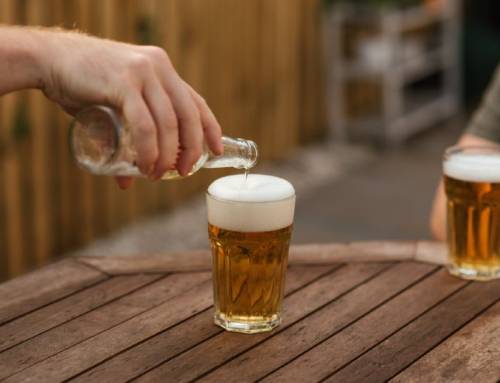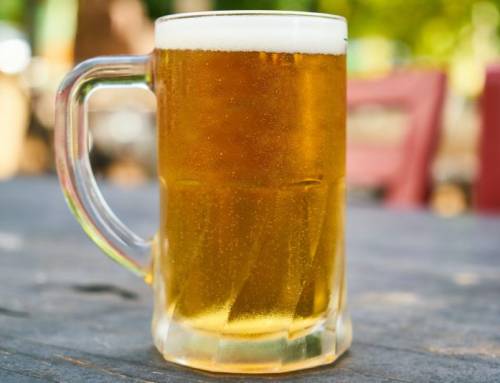Why Does The Glass Matter When Enjoying a Beer?
When drinking a beer, the glass definitely matters! It can change the entire drinking experience from an ordinary one to an extraordinary one. After all, why would you want to drink a fine craft beer out of a plastic cup? The glass can affect the taste of your beer, the aroma of the hops, and even the overall look of the brew! Plus, sipping from a fancy glass can make you feel like a connoisseur, and that’s definitely worth the extra effort. So next time you’re enjoying a beer, don’t forget to choose the right glass!
How Different Types of Glasses Enhance The Beer Drinking Experience
Ah, beer. A glorious beverage that dates back to the ancient Egyptians, and still holds the title of the world’s most popular alcoholic drink. But have you ever considered how different types of glasses can enhance your beer drinking experience? Let’s dive in and explore some of the unique ways that glasses can make your beer drinking even better!
First, let’s talk about the classic pint glass. This quintessential glass is the go-to choice for beer lovers everywhere. Its shape is perfect for capturing the full aroma of your beer and its wide rim makes for easy sipping. Plus, it’s great for doing cheers with your friends or clinking your glasses together for a toast!
Next up, let’s discuss the beer mug. This heavy-duty glass is not only perfect for keeping your beer cold and refreshing, but also for slamming it down on the bar after you’ve finished it! Plus, the handle makes it easy to carry around and show off your brew.
The tulip glass is another great option for beer drinkers. Its curved shape helps to trap the aromas of your beer, while its stem allows you to swirl the beer around, allowing the flavors to fully open up before you drink.
Finally, let’s talk about the goblet. This ornate glass is perfect for special occasions or just to add a touch of class to your beer drinking. Its wide bowl shape allows for a large head of foam, which is sure to make your beer look as good as it tastes!
No matter what type of glass you choose, one thing is for sure: your beer drinking experience is sure to be enhanced by the unique characteristics of each type of glass. So, the next time you’re enjoying a cold one, don’t forget to pick the right glass for the job! Cheers!
Exploring The Pros and Cons of Using Different Beer Glasses
Ah, beer. The beloved beverage of sports fans, college students, and everyone in between. After all, nothing quite hits the spot like a cold beer after a long day. But did you know that the type of beer glass you use could make all the difference in your beer-drinking experience? Let’s explore the pros and cons of using different beer glasses.
The Pilsner Glass. Pros: Great for light, hoppy beers like pilsners. Cons: Not particularly visually appealing, as it’s essentially just a slim, tall glass.
The Pint Glass. Pros: A classic and timeless look. Cons: Doesn’t really do much to enhance the flavor of the beer.
The Snifter Glass. Pros: A sophisticated and elegant look. Cons: Not particularly practical, as the shape of the glass makes it difficult to pick up and drink.
The Beer Stein. Pros: A tried and true classic. Cons: Not great for keeping beer cold.
The Tulip Glass. Pros: Great for Belgian ales, as the shape of the glass helps to capture the flavor and aroma of the beer. Cons: Not the most visually appealing of the beer glasses.
The Goblet. Pros: A great conversation starter. Cons: Not particularly practical, as the shape of the glass makes it difficult to drink from.
The Flute Glass. Pros: A unique and eye-catching look. Cons: Not great for capturing the aroma of the beer.
No matter which glass you choose, you’re sure to enjoy your beer drinking experience all the more. So the next time you’re out for a beer, be sure to choose the glass that’s right for you. Cheers!
The Science Behind Beer Glasses and How They Affect Your Drinking Experience
Ah, beer. The staple of tailgates, sporting events, and summer barbecues. It’s a beverage that has been around for centuries, and its popularity shows no signs of waning. But what about the glasses it’s served in? Believe it or not, the shape and size of the glass can play a vital role in how you experience your favorite brew.
Now, you may be asking yourself: “What’s so special about beer glasses?” Well, for starters, the shape of the glass can affect the aroma of the beer. Different beer glasses are designed to enhance the smell of the beverage, and that can be a huge part of the drinking experience. For instance, a dimpled mug will help trap the beer’s aroma, while a tall, thin glass will help to accentuate the aroma.
The size of the glass can also have a huge impact on your drinking experience. A smaller glass will cause you to drink the beer faster, while a larger glass will slow you down and allow you to savor the flavor. In addition, the shape of the glass can help to maintain the beer’s head, or foam. A glass with a wide rim will help to keep the head intact, while a narrower rim will cause it to dissipate more quickly.
But beer glasses can do more than just improve your drinking experience. They can also serve as a conversation piece. A unique beer glass can spark a conversation and even start a lively debate about the merits of different types of beers. In addition, a well-crafted beer glass can add a touch of class to any bar or gathering.
So there you have it: the science behind beer glasses and how they can affect your drinking experience. So next time you’re enjoying a cold one, don’t forget to spend some time thinking about the glass you’re drinking from. It may just make your experience that much more enjoyable!
Conclusion
The glass used when drinking beer can affect the overall experience of the beer. The shape of the glass can have an impact on the aroma, flavor, and enjoyment of the beer. The type of glass and material used can also affect the temperature of the beer and the carbonation levels. Ultimately, the glass used when drinking beer matters, as it can influence the overall taste and experience of the beer.





